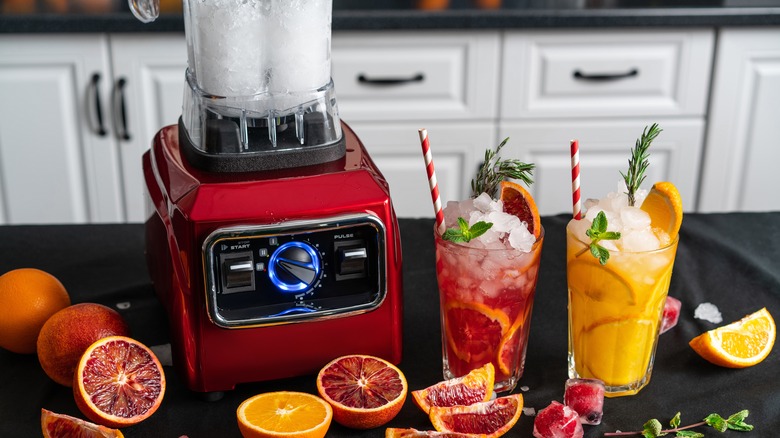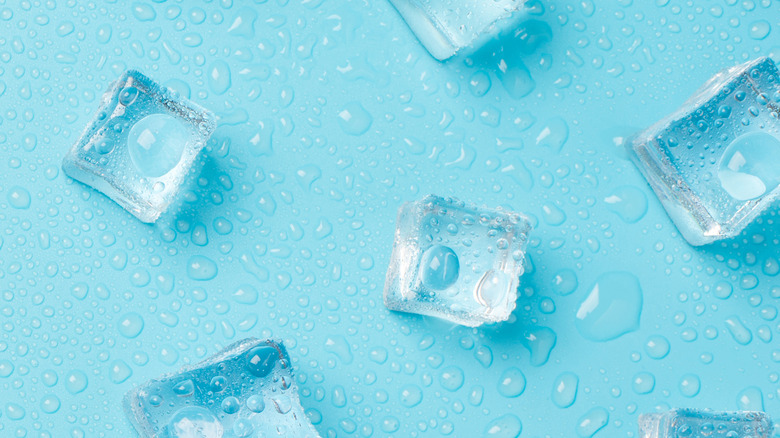Why You Should Think Twice About Putting Ice Cubes In The Blender
A kitchen appliance that does it all, blenders can help you craft a fresh gazpacho and also a boozy piña colada. All that's required are the right ingredients and a single touch of a button. With the motor activated, Gadget Review explains that blender blades are powered to rotate, causing a chopping motion that leads to ultra-creamy concoctions. However, while many ingredients fare well in a blender, the appliance does have its limits, which is why you should think twice when adding ice cubes.
Though food processors and immersion blenders function similarly, only a traditional blender can give you the silkiest byproduct, partly due to the combination of solids and liquids required when mixing. Bon Appétit notes that liquid creates a vortex that more effectively draws chunks of fruits and vegetables towards the center blade. Naturally, all of this motion also requires some space. It's wise not to overcrowd the machine, or else this can lead to a lack of spinning and an abundance of frustration. Adding to that annoyance, some ingredients might also prove problematic, especially those that are rock hard — we're looking at you, ice cubes!
Ice cubes could wreck blender blades
While ice cubes are a must for chilled smoothies and slushies, they can be hard for blenders to break down. Aside from leaving you with uneven hunks of frigid ice, EatingWell also warns that the chunks could also make blades dull or, even worse, break them entirely.
It's true that pre-crushed ice can cause your blender significantly less stress, but sometimes that just isn't possible. Instead, Homes & Gardens notes that you can add some water to the ice, pulsing slowly until you have a slushy result, then simply use a sieve to eliminate excess moisture. Alternatively, Thrive Cuisine suggests letting ice thaw for about 10 minutes to slightly soften cubes before adding them to your blender.
Of course, before you use any of these hacks, always make sure to follow the guidelines listed in your blender's instruction manual. Not all appliances are made equal, so what might be suitable for one appliance could lead to cracking or breaking for another.

